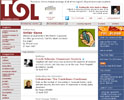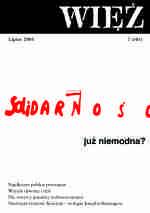Motifs in the Decor of Art Nouveau Architecture in Riga and their Origins
Rīgas jūgendstila perioda arhitektūras dekora motīvi un to izcelsme
Keywords: Riga; architecture; Art Nouveau; symbolism; plastic decor; motifs; facades; flora; fauna; geometric ornaments; anthropomorphic decor; ethnographic motifs; synthesis of arts
As soon as Art Nouveau began to appear in the architectural décor of Riga at the turn of the 19th and 20th centuries, depictions of nature became increasingly popular. Of course, there was not just the main and specific Art Nouveau approach, which Robert Schmutzler cleverly described as “Biological Romanticism”, there were also other ways of approaching the natural world. Paul Greenhalg has described this as “symbolic conventionalisation”, pantheism, metamorphosis and evolutionism. Pantheism became the main strategy for interior design at the turn of the 19th and 20th centuries in Riga, particularly insofar as vestibules are concerned. By contrast, façades manifested ideas of conventional Symbolism or of metamorphosis and evolutionism. Stylisation of natural motifs was one of the most popular techniques in designing wallpaper and stencilled décor on walls. Specialist publications had a major influence when it came to selecting the range of colours and ornamentation and since the mid 19th century their number had increased very rapidly. In Riga, as in several other provincial centres in the Russian Empire, Historicism played a particularly important role in architectural décor. When architects and designers began to move toward Art Nouveau it was often in the context of a reinterpretation of motifs that were popular in various neo-styles. New meaning was also attached to motifs and subjects that had been tested in the decorative arts and remained well known in the latter half of the 19th century and whose sources were to be found in various popular publications such as the ornamental handbook by Franz Sales Meyer, the edition “Alegorien un Embleme” issued by Martin Gerlach, etc. The interest in emblems and heraldry in particular that had been inherited from the 19th century endured throughout the period under review. Façade décor features both natural depictions of flora and fauna and their stylisations. Along popular Art Nouveau motifs (water-lilies, poppies, lilies, peacock, snake, and stylised motifs of the sun), traditional motifs from historic styles were also widely used. In the latter period of Art Nouveau, the depiction of motifs from nature no longer stressed the aesthetics of its primal forces but opted more for the depiction of man’s conquest of nature. Motifs were strongly stylised, and subject matter included hunting scenes as well as the depiction of flowers in vases or baskets. One important aspect of the conceptual decorative forms of Art Nouveau relates to the unusual cult of line that was characteristic of the style. Independent asymmetrical use of linear motifs in the plastic décor of façades in Riga was uncommon. Asymmetrically curved lines or rhythmic lines were more often used in the depiction of natural motifs, as well as anthropomorphic motifs, especially masks and hybrid creatures. One aspect of the linearism typical of Art Nouveau could be seen in the tassel of bows motif.
More...

